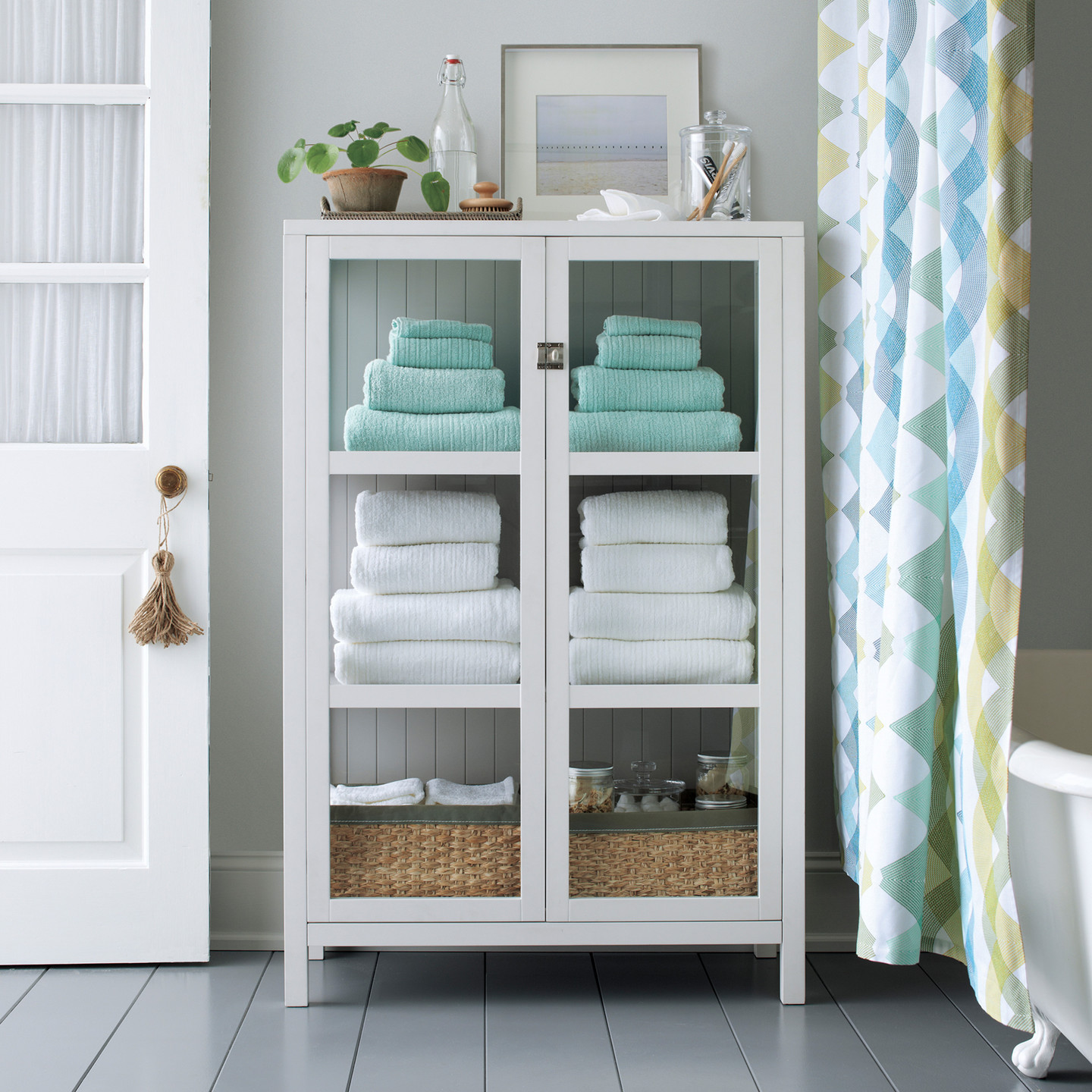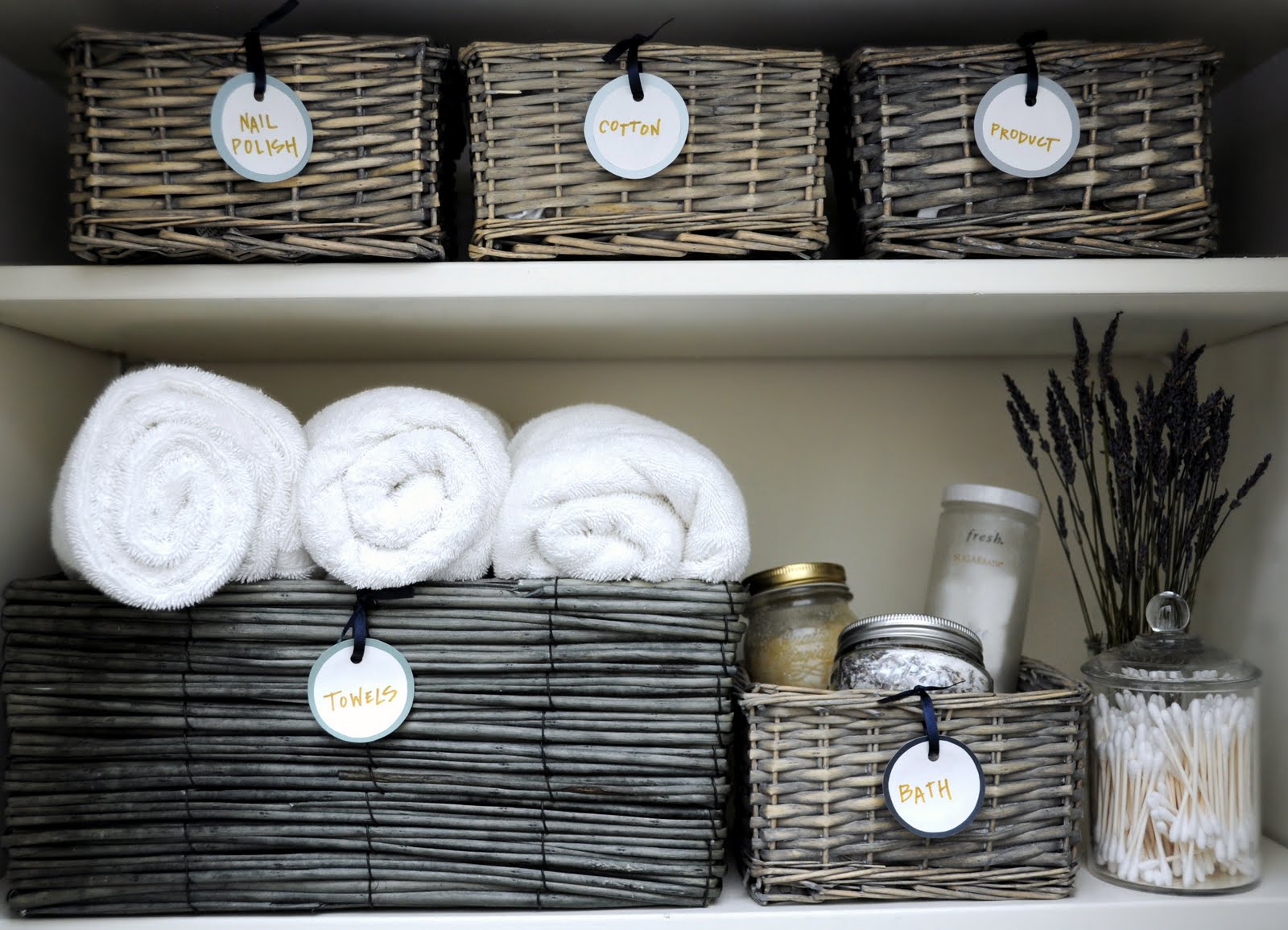Towel Storage Solutions
Towel storage is a crucial aspect of bathroom organization and aesthetics. Finding the right storage solution can transform your bathroom into a more functional and visually appealing space. There are numerous options available, each with its own advantages and disadvantages. Let’s delve into the various towel storage solutions and explore their suitability for different bathroom layouts and styles.
Towel Cabinets
Towel cabinets offer a concealed and organized storage solution for your towels. These cabinets are typically built into the bathroom vanity or installed as freestanding units.
Pros
- Concealed Storage: Cabinets keep towels hidden from view, maintaining a clean and uncluttered bathroom aesthetic.
- Dust and Moisture Protection: Towel cabinets shield towels from dust and moisture, extending their lifespan and keeping them fresh.
- Organization: Cabinets allow for organized towel storage, with shelves or drawers for categorizing towels by size or type.
- Space Efficiency: Cabinets maximize vertical space, especially in smaller bathrooms, by utilizing the wall area efficiently.
Cons
- Cost: Towel cabinets can be more expensive than other storage solutions, especially custom-built or high-end models.
- Limited Accessibility: Accessing towels within cabinets can be less convenient compared to open shelves or racks.
- Installation: Installing a towel cabinet may require professional help, especially for built-in units.
Towel Shelves
Towel shelves are a popular and versatile storage option that provide open access to towels. They can be installed on walls or within existing cabinets.
Pros
- Easy Access: Open shelves allow for quick and convenient access to towels.
- Visual Appeal: Towel shelves can be a decorative element, showcasing your towels and adding a touch of style to your bathroom.
- Cost-Effective: Towel shelves are generally more affordable than cabinets.
- Flexibility: Shelves can be adjusted to accommodate different towel sizes and quantities.
Cons
- Dust Accumulation: Open shelves can accumulate dust, requiring regular cleaning.
- Cluttered Appearance: A large number of towels on open shelves can create a cluttered look.
- Limited Storage: Shelves provide less storage capacity compared to cabinets.
Towel Bars
Towel bars are simple yet effective storage solutions that offer a practical and stylish way to hang towels. They come in various materials, finishes, and sizes.
Pros
- Easy Installation: Towel bars are generally easy to install, requiring minimal tools and effort.
- Aesthetics: Towel bars can enhance the bathroom’s visual appeal, adding a touch of modern or traditional design.
- Air Circulation: Hanging towels on bars allows for air circulation, helping them dry faster and preventing mildew growth.
- Space-Saving: Towel bars can be installed in limited spaces, making them ideal for smaller bathrooms.
Cons
- Limited Storage: Towel bars offer limited storage capacity, suitable for only a few towels.
- Cluttered Appearance: Multiple towels hanging on bars can create a cluttered look.
Specialized Towel Racks
Specialized towel racks are designed for specific purposes, such as heated towel racks or over-the-door towel racks. These racks offer unique features and benefits.
Pros
- Heated Towel Racks: Heated towel racks provide warm, dry towels, ideal for cold climates or after showers.
- Over-the-Door Towel Racks: Over-the-door racks offer a convenient storage solution for small bathrooms, maximizing vertical space.
Cons
- Cost: Specialized towel racks can be more expensive than standard options.
- Limited Functionality: Over-the-door racks may not be suitable for heavy towels or large quantities.
Towel Storage Options: A Comparative Table
| Option | Features | Suitability | Towel Cabinets | Concealed storage, dust and moisture protection, organization, space efficiency | Large bathrooms, modern and traditional styles | Towel Shelves | Easy access, visual appeal, cost-effective, flexibility | Small to medium bathrooms, contemporary and rustic styles | Towel Bars | Easy installation, aesthetics, air circulation, space-saving | Small bathrooms, modern and minimalist styles | Specialized Towel Racks | Heated towels, over-the-door convenience | Bathrooms with limited space, modern and functional styles |
|---|
Organizing Towels for Efficiency: How To Store Towels In Bathroom

Towel organization goes beyond just storing them. It’s about creating a system that maximizes space, minimizes wrinkles, and makes grabbing the right towel a breeze. A well-organized towel collection translates to a more efficient bathroom routine, ensuring you always have the right towel for the occasion.
Organizing Towels by Type and Frequency of Use, How to store towels in bathroom
Organizing towels based on their type and frequency of use streamlines your bathroom routine. This strategy ensures you can quickly locate the specific towel you need, saving time and effort.
- Bath Towels: These large towels are used after showering or bathing, so it’s logical to keep them readily accessible and grouped together. For families, consider assigning a color or pattern to each member to prevent confusion.
- Hand Towels: Hand towels are frequently used throughout the day, making it crucial to have them easily accessible near the sink. A designated hand towel holder near the sink is ideal.
- Face Towels: These smaller towels are perfect for drying your face after washing or removing makeup. Keep them near the sink or in a dedicated drawer for easy access.
- Guest Towels: Guest towels are for visitors and should be kept separate from your personal towels. A decorative basket or shelf near the guest bathroom sink is an elegant and practical solution.
Folding Towels for Maximum Space and Minimal Wrinkles
The way you fold your towels significantly impacts how much space they take up and their overall appearance. Mastering the art of towel folding can save space and create a more visually appealing bathroom.
- The “Roll-Up” Method: This technique is perfect for bath towels and guest towels. Roll the towel lengthwise, tucking in the ends, and then secure it with a ribbon or rubber band. This method is space-saving and prevents wrinkles.
- The “Traditional” Fold: The classic fold involves folding the towel in half lengthwise, then folding it in half again, creating a rectangular shape. This method is simple and effective for all towel sizes.
- The “Accordion” Fold: This method involves folding the towel in thirds, then folding it again in thirds, creating a compact and tidy shape. It’s ideal for hand towels and face towels.
Arranging Towels Within a Storage Solution
The way you arrange your towels within your chosen storage solution can impact their accessibility and visual appeal.
- Stacking: Stacking towels is a simple and efficient way to store them. Use a shelf, drawer, or even a basket to create a neat stack. Ensure the towels are folded consistently for a visually pleasing effect.
- Rolling: Rolling towels can save space and create a visually appealing display. Place rolled towels in a basket, on a shelf, or even in a drawer. This method is particularly useful for bath towels and guest towels.
- Hanging: Hanging towels on hooks or a towel rack is a great way to keep them organized and accessible. This method is ideal for hand towels and face towels, as it allows them to dry quickly.
Maintaining Towel Hygiene and Freshness

Towels, like any other fabric, accumulate bacteria and dirt over time, especially when used frequently. Maintaining towel hygiene is crucial for preventing skin irritation, infections, and unpleasant odors. Regular washing and proper drying techniques play a vital role in keeping towels clean and fresh.
Washing Towels Regularly
The frequency of towel washing depends on usage, but generally, towels should be washed after 3-4 uses. This ensures that bacteria and dirt are removed before they build up, promoting a hygienic and pleasant experience.
Appropriate Washing Temperatures and Cycles
- Hot Water: Washing towels in hot water (140°F or 60°C) effectively kills bacteria and removes dirt. This temperature is particularly beneficial for towels used by individuals with skin conditions or weakened immune systems.
- Warm Water: If hot water is not available or preferred, warm water (105°F or 40°C) can also be effective for cleaning towels. However, it may not eliminate all bacteria as effectively as hot water.
- Cold Water: Cold water (below 60°F or 15°C) is not recommended for regular towel washing as it may not effectively remove dirt and bacteria.
- Regular Cycle: A regular wash cycle is generally sufficient for most towels. However, for heavily soiled towels, a more intensive cycle like a “bulky” or “heavy duty” cycle may be necessary.
- Delicate Cycle: Towels made from delicate materials like silk or cashmere may require a delicate cycle to prevent damage.
Using Detergent and Fabric Softener
- Detergent: Using a good quality detergent is crucial for effective cleaning. Avoid using too much detergent, as it can leave residue on the towels and affect their absorbency.
- Fabric Softener: Fabric softener can make towels feel softer and fluffier. However, it can also reduce absorbency, so it is recommended to use it sparingly.
Drying Towels Effectively
Proper drying is essential for maintaining towel hygiene and preventing mildew and odor.
Air-Drying Towels
- Hang Towels: Hang towels on a drying rack or clothesline in a well-ventilated area. Ensure the towels are spread out and not touching each other to allow for proper air circulation.
- Avoid Direct Sunlight: Direct sunlight can fade the color of towels and make them feel stiff. It’s best to air-dry towels in a shaded area.
Using a Dryer
- High Heat Setting: Drying towels on a high heat setting is the most effective way to eliminate bacteria and moisture. However, it can also cause shrinkage and damage to the towels.
- Low Heat Setting: For delicate towels, use a low heat setting to prevent damage. However, this may take longer to dry the towels completely.
Preventing Mildew and Odor in Towels
Mildew and odor can develop in towels due to moisture trapped in the fibers.
Proper Ventilation
- Well-Ventilated Bathroom: Ensure the bathroom is well-ventilated by using a fan or opening a window after showering or bathing. This helps to remove excess moisture from the air and prevent mildew growth.
- Avoid Leaving Towels Damp: Do not leave towels damp in a laundry basket or on the floor. Hang them to dry immediately after use.
Storage Practices
- Store Towels Dry: Ensure towels are completely dry before storing them. Moisture can lead to mildew growth and unpleasant odors.
- Store in a Dry and Well-Ventilated Area: Store towels in a dry and well-ventilated area, such as a linen closet or cabinet. Avoid storing them in damp or enclosed spaces.
